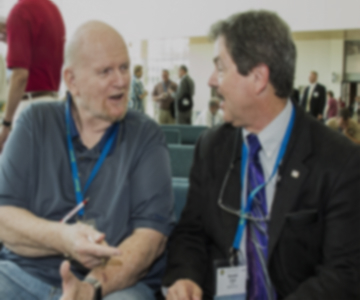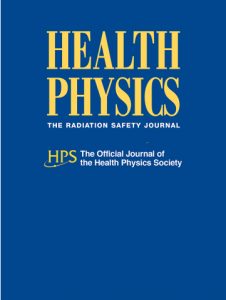In 1961, when I was two years old, my mother had radioactive iodine treatment for hyperthyroidism. For whatever reason, my family wasn’t aware of procedures to minimize exposure at home, and I slept in the same bed with my mother.
As an adult, I had fertility issues (blighted ovum, etc.) and was never able to have children. Could this have been caused by the exposure? Also, do I have a greater risk of cancer because of this exposure?
Based on the information you have given, it seems that the infertility you have suffered is probably not related to your early childhood radiation exposure and your additional risk of cancer from the radiation exposure is also small.
Without more specific information about your mother’s treatment, your radiation exposure can only be estimated, but I use the typical maximum treatment for the estimate, so your actual radiation dose may have been less. You do not mention this, but I am assuming that your mother was not still breast-feeding you at the time this occurred, as that would change this evaluation.
Historically, the typical treatment for hyperthyroidism has been limited to about 1,110 megabecquerels (MBq), a measure of radioactivity, of Iodine-131 (131I), most of which would have stayed in your mother’s thyroid as it naturally decayed away. This means that the highest radiation dose would be in the vicinity of your mother’s neck, and it would decrease the further away you were from that area. So, sleeping in the same bed with her, it might be reasonable to assume that your ovaries were at least one foot away from her thyroid (neck) during that time. In that case, your ovaries would receive a radiation dose of less than 100–200 mGy, even if you slept 8 to 10 hours per day with her (Zanzonico 1997). In adult women, the dose that causes permanent sterility is about 2,500 mGy, or 10–25 times higher than the dose you would have received (Wallace 2005).
Studies of women irradiated when they were children show that it actually takes a higher dose of radiation to cause permanent sterility in children than in adults. I was not able to find anything in the scientific literature relating childhood radiation exposure to the experience of blighted ovum specifically, but infertility problems generally would only occur at much higher radiation doses (Kleinerman 2006).
An increased risk of cancer is associated with radiation exposure, and for many cancers the risk is higher if one is exposed as a child than as an adult. Using the same assumptions as above, we can make a very rough estimate of the radiation dose to your whole body of 150–300 mSv. This dose, especially when received as a child, is associated with a small increased risk of cancer. In the United States, everyone has a risk over their lifetime of receiving a cancer diagnosis. This risk is about 38% for females; meaning about 190 out of every 500 women will experience a cancer in their lifetime (SEER 1975–2014). Your risk may have increased by a small amount, but it is not possible to predict whether or not a cancer will occur.
Barbara Hamrick, CHP, JD
References
Kleinerman RA. Cancer risks following diagnostic and therapeutic radiation exposure in children. Pediatr Radiol 36(2): 121–125; 2006. DOI: 10.1007/s00247–006–0191–5.
SEER Cancer Statistics Review 1975-2014. Available at: https://seer.cancer.gov/csr/1975_2014/results_merged/topic_lifetime_risk.pdf. Accessed 14 September 2018.
Wallace WHB, Thompson AB, Saran F, Kelsey TW. Predicting age of ovarian failure after radiation to a field that includes the ovaries. Int J Radiation Oncology Biol Phys 62(3): 738–744; 2005. DOI: 10.1016/j.ijrobp.2004.11.038. Accessed 14 September 2018.
Zanzonico PB. Radiation dose to patients and relatives incident to I 131 therapy. Thyroid 7(2); 1997. DOI: 10.1089/thy.1997.7.199. Accessed 14 September 2018.
Answer posted on 15 September 2018. The information posted on this web page is intended as general reference information only. Specific facts and circumstances may affect the applicability of concepts, materials, and information described herein. The information provided is not a substitute for professional advice and should not be relied upon in the absence of such professional advice. To the best of our knowledge, answers are correct at the time they are posted. Be advised that over time, requirements could change, new data could be made available, and Internet links could change, affecting the correctness of the answers. Answers are the professional opinions of the expert responding to each question; they do not necessarily represent the position of the Health Physics Society.






